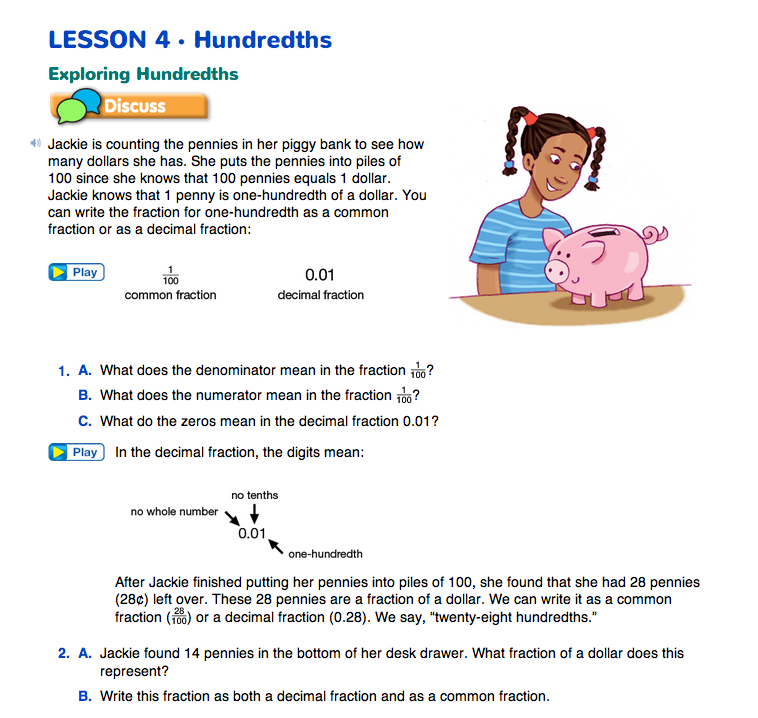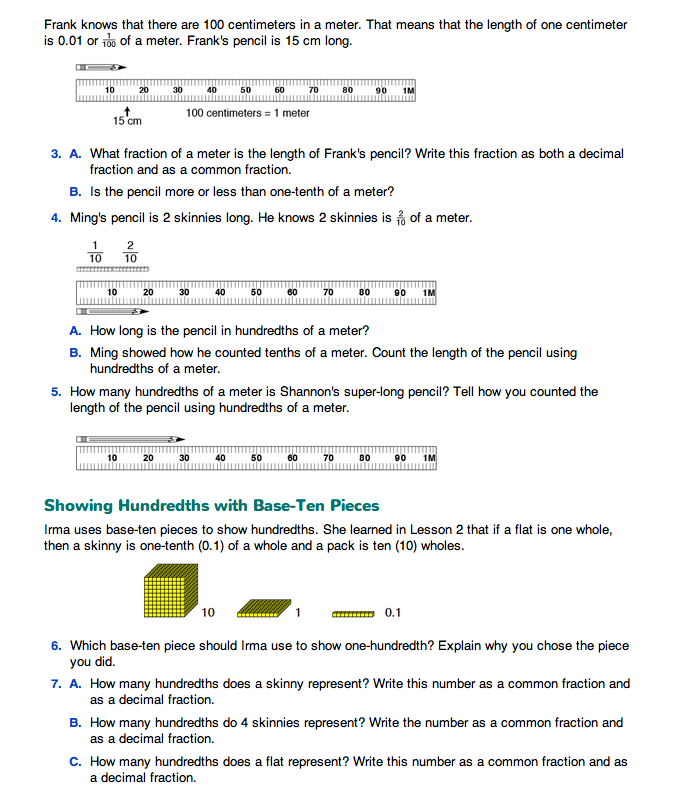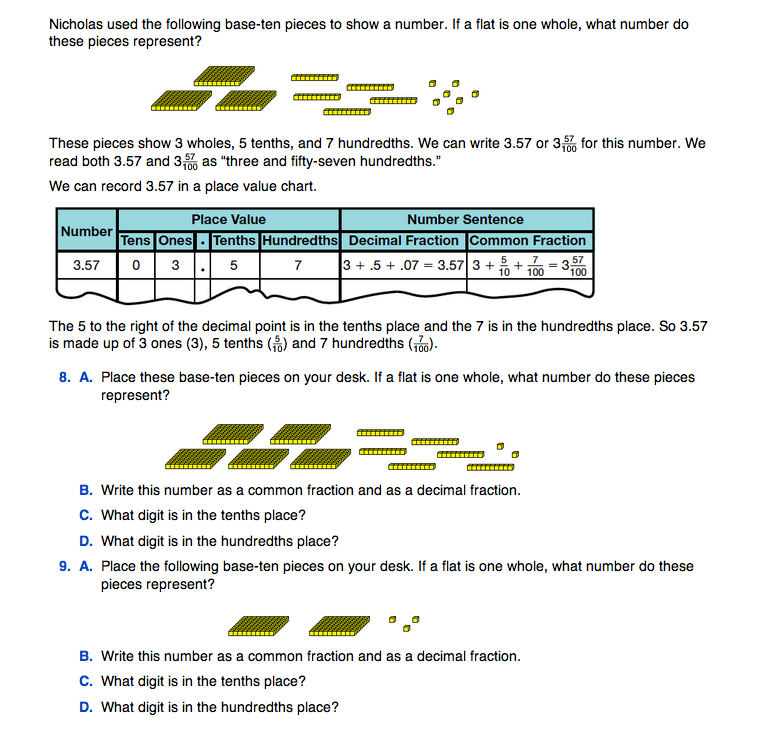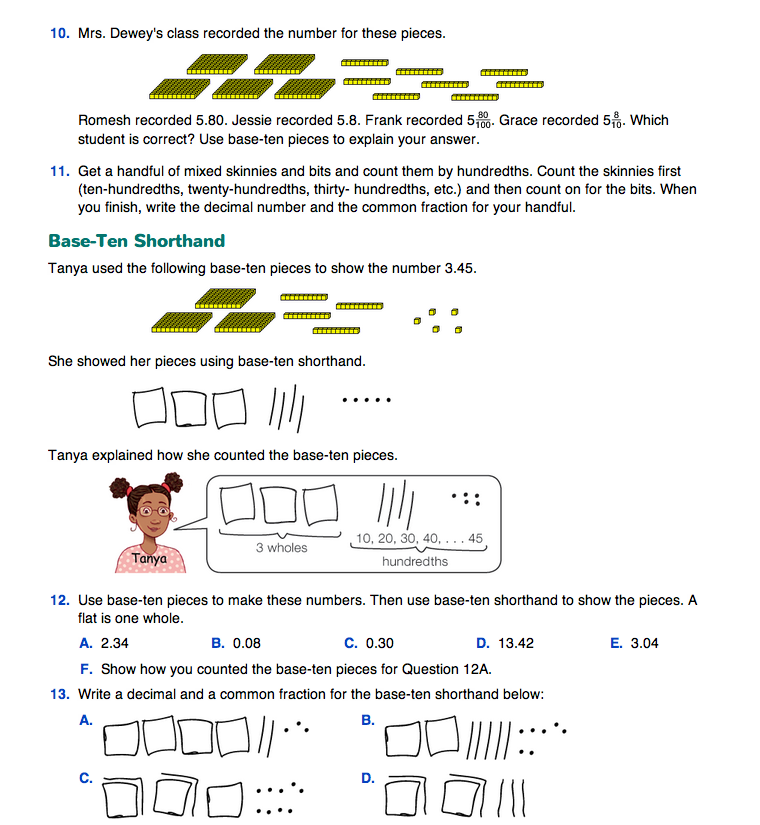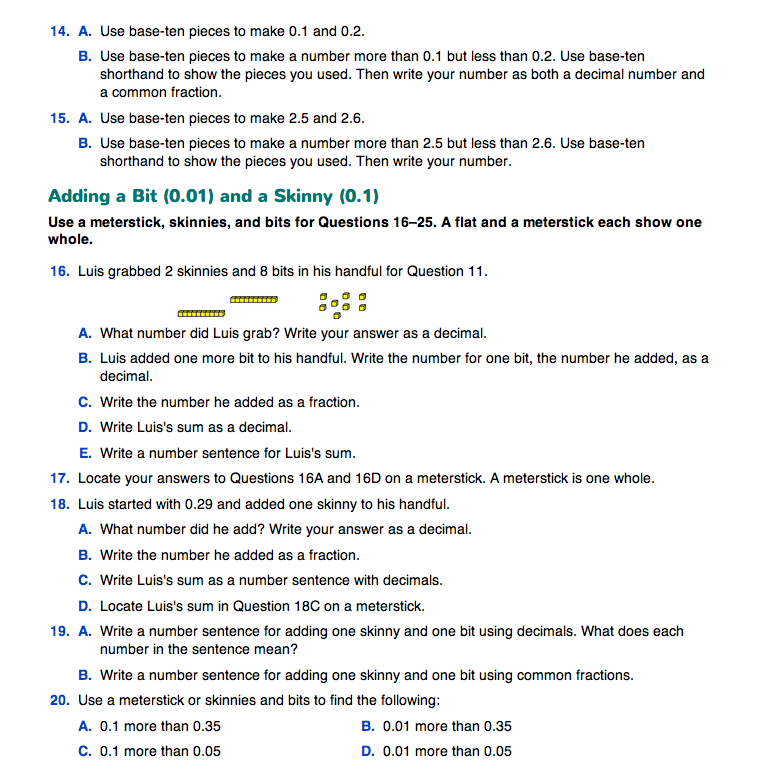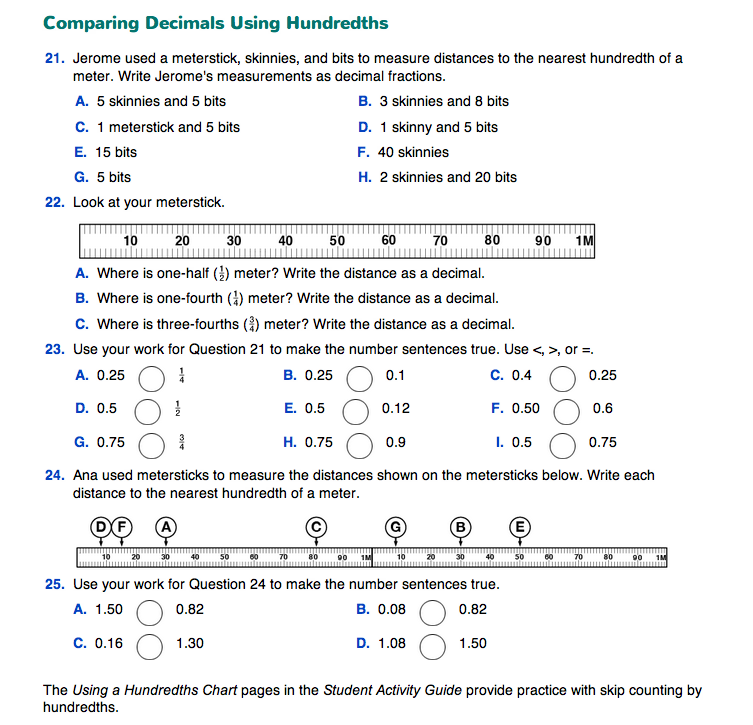Hundredths
Est. Class Sessions: 2–4Developing the Lesson
Part 1. Exploring Hundredths with Models
Count Hundredths of a Dollar. Give each group of four students between 100 and 300 pennies (or other small objects).
Ask each group:
Use the vignette on the Hundredths page in the Student Guide to continue to introduce hundredths in the context of money. Ask small groups to answer and discuss Questions 1 and 2. A penny is one one-hundredth of a dollar and can be written as either a common fraction (1/100) or as a decimal fraction (0.01). An important part of the discussion occurs when students identify the meaning of the zeros in the decimal. The zero to the left of the decimal point tells us that there are no ones or whole values. The zero immediately to the right of the decimal point tells us that there are no tenths.
Measure to the Nearest Hundredth of a Meter. Give each pair of students a set of base-ten pieces. Allow access to metersticks as needed. In Lessons 1–3, students used number lines (metersticks) to represent decimals.
Questions 3–5 in this lesson build on this representation as students measure to the nearest hundredth of a meter.
Students might say the pencil in Question 3 is between one-tenth and two-tenths of a meter or between 1 and 2 skinnies using their prior experiences measuring tenths. Questions 4 and 5 help them think about how to count hundredths of a meter. Ask students to share their ideas and strategies for Question 5.
Showing Hundredths with Base-Ten Pieces. As in the vignette before Question 6, ask students to take out a pack, a flat, and a skinny.Ask:
If students do not suggest a bit to represent 0.01 with base-ten pieces in Question 6, ask them to take out a flat. Remind them that a flat is one whole.
Ask:
Once students have explained what they would choose and why, ask them to answer Question 7. Check that students are representing hundredths appropriately as common and decimal fractions.
Ask students to take out 3 flats, 5 skinnies, and 7 bits. Ask student pairs to write the number the pieces represent. After students have had a few minutes to work, share Nicholas's solution in the vignette before Question 8.
Assign Questions 8–11. Students represent numbers with base-ten pieces and write a common and a decimal fraction for each number. In Question 9, students are shown the base-ten pieces representing 2.03, as shown in Figure 1. Make sure students understand that these base-ten pieces represent 2 wholes, zero tenths, and three hundredths. Provide similar examples if they need more practice.
For Question 10, students use their base-ten pieces to explain why 5.80, 5.8, 58/10, and 580/100 all correctly represent the same base-ten pieces. Have partners prepare a clear explanation. Then as pairs give their explanations to the class, encourage the class to ask clarifying questions.
In Question 11, students take a handful of skinnies and bits and count them by hundredths. Ask student pairs to swap handfuls and check their partner's count. Have a few students share their count strategy with the entire class.
Use Base-Ten Shorthand. The vignette before Question 12 reviews the use of base-ten shorthand to record pieces and shows a student counting by hundredths. After reviewing the vignette, assign Questions 12–15. These questions develop number sense for decimals as they provide practice translating between base-ten representations and written numbers.
Adding a Bit (0.01) and a Skinny (0.1). Questions 16–20 introduce students to simple addition of hundredths and tenths. Students will need metersticks, skinnies, and bits. The questions ask students to add one bit and then one skinny to a collection of base-ten pieces. They write the sums as decimals and place them on the number line and meterstick.
As students work, ask questions similar to:
Comparing Decimals Using Hundredths. Conclude this portion of the lesson by asking students to answer Questions 21–25. These questions ask students to write measured distances to the nearest hundredth of a meter in order to compare distances written as decimals. Ask them to show how they count hundredths of a meter and whole meters.
Question 24 helps students make connections between 1/2, 1/4, and 3/4 and their decimal equivalents of 0.5, 0.25, and 0.75. Familiarity with the location of these benchmark fractions on a number line (meterstick) will develop number sense and prepare students for comparing and ordering fractions and decimals using these benchmarks.













